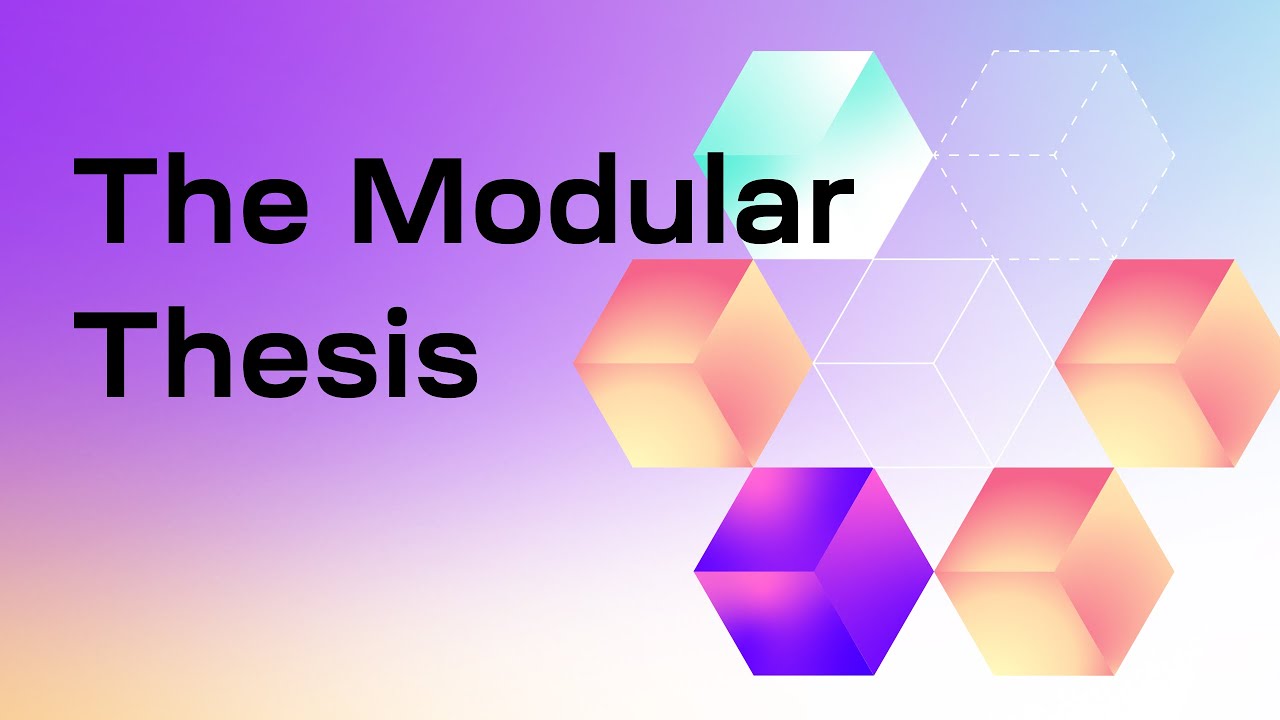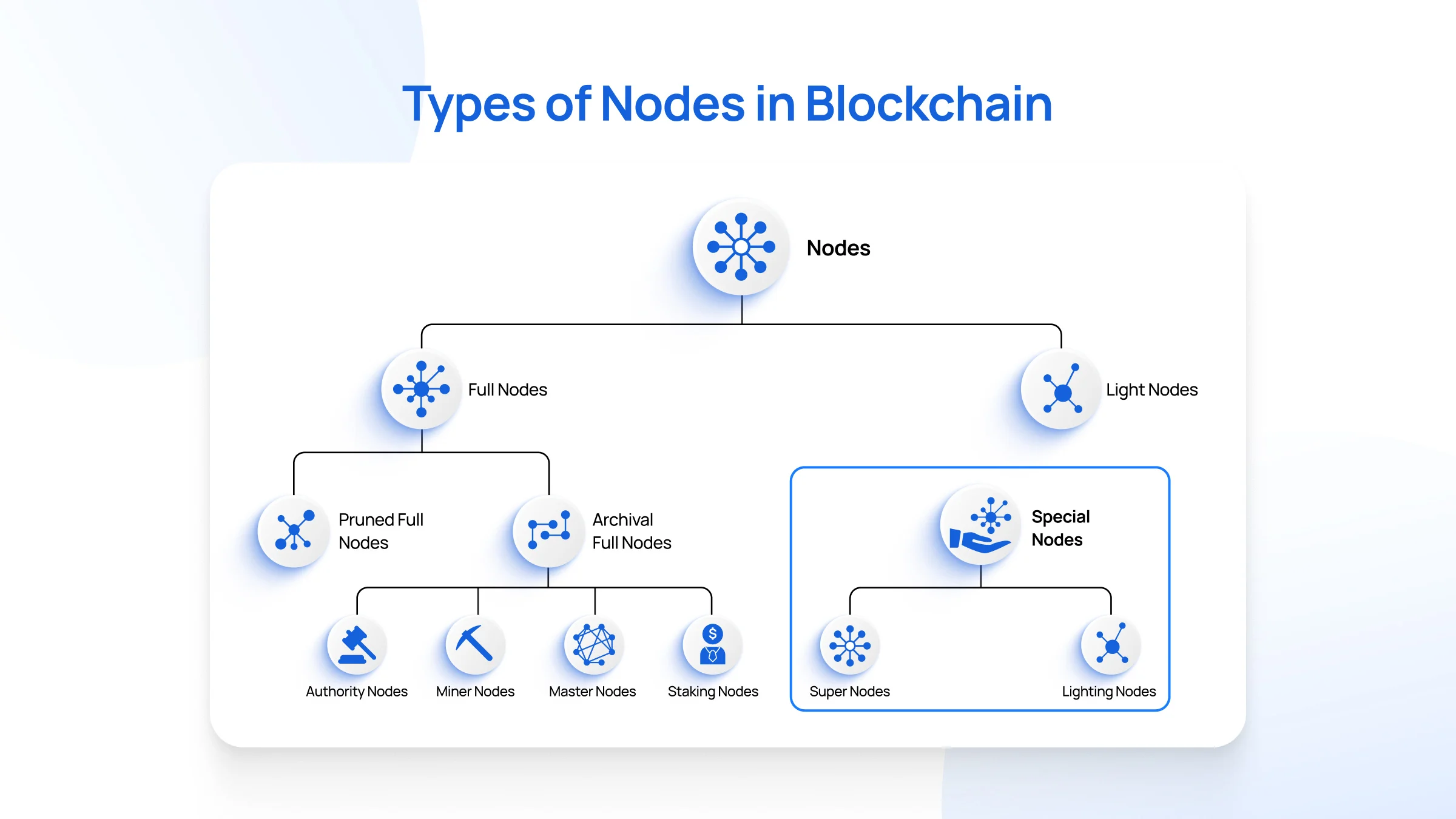Understanding the Modular Blockchain Thesis: The Future of Scalable and Specialized Blockchains
The blockchain industry is evolving rapidly, and with this evolution comes new architectural approaches to solving old problems. One of the most compelling ideas gaining momentum is the Modular Blockchain Thesis. In contrast to monolithic blockchains like Ethereum and Bitcoin, modular blockchains aim to decouple the key functions of blockchain infrastructure—offering more scalability, flexibility, and specialization.
In this article, we’ll explore:
- What is the Modular Blockchain Thesis?
- How modular blockchains differ from monolithic ones
- Core components of modular architecture
- Examples of modular blockchain projects
- Advantages and challenges
- Future outlook
1. What Is the Modular Blockchain Thesis?
The Modular Blockchain Thesis posits that blockchain systems should separate their core functions into distinct layers, with each layer optimized for a specific task. Rather than building one chain to handle everything—data availability, consensus, execution, and settlement—these functions are decentralized into separate modules.
The key idea is specialization: Let one blockchain do what it does best and delegate the rest to other layers that are designed for those tasks. This enables blockchains to scale more effectively, become more interoperable, and allow developers to customize their stack.
2. Monolithic vs. Modular Blockchains
Monolithic Blockchains
Traditional blockchains like Bitcoin and Ethereum are monolithic. They handle:
- Consensus (agreeing on the order of transactions),
- Execution (processing smart contracts),
- Data availability (ensuring data is available to everyone),
- Settlement (finalizing and recording transactions).
All these happen on a single layer. While secure and decentralized, monolithic chains struggle with scalability and throughput due to the high computational and storage burden.
Modular Blockchains
Modular blockchains split these functions into distinct layers, with each optimized for its role:
- Consensus Layer: Ensures network agreement.
- Execution Layer: Processes smart contracts and state changes.
- Data Availability Layer: Ensures data needed to verify transactions is readily accessible.
- Settlement Layer: Provides finality and acts as a source of truth.
This division leads to specialized chains working together in a multi-layered architecture.
3. Core Layers of Modular Architecture
Let’s break down the four core layers of a modular blockchain:
1. Execution Layer
- Responsible for running smart contracts and computing state transitions.
- Can exist as a rollup or application-specific chain.
- Examples: Arbitrum, Optimism, StarkNet.
2. Data Availability (DA) Layer
- Ensures transaction data is available to the network so nodes can verify state changes.
- High DA is essential for rollups to function securely.
- Examples: Celestia, EigenDA, Ethereum (as a DA layer).
3. Consensus Layer
- Orders transactions and secures the network via Proof-of-Stake or Proof-of-Work.
- Often bundled with the DA layer.
- Examples: Tendermint, Ethereum’s beacon chain.
4. Settlement Layer
- Finalizes and records transactions.
- Acts as the source of truth for rollups.
- Ethereum is currently the most widely used settlement layer.
4. Examples of Modular Blockchain Projects
1. Celestia
- The first modular blockchain focused on data availability and consensus.
- Delegates execution to external rollups and application chains.
- Allows developers to launch their own sovereign rollups easily.
2. Ethereum (Post-Merge)
- Transitioned into a more modular design.
- With rollups like Optimism and Arbitrum, Ethereum focuses more on settlement and DA.
- Danksharding and Proto-Danksharding (EIP-4844) aim to further enhance Ethereum’s DA capabilities.
3. Polygon 2.0
- Moving towards a modular ecosystem with zk-rollups, supernets, and a common settlement layer.
- Focuses on Ethereum-aligned scaling.
4. Cosmos Ecosystem
- Uses the Hub-and-Zone model.
- Cosmos Hub serves as a settlement and governance layer while zones handle execution.
- Not strictly modular, but embodies many modular principles.
5. Benefits of Modular Blockchains
1. Scalability
- Rollups process execution off-chain and use modular DA layers, reducing load on the main chain.
- Sharding DA and offloading execution enable massive throughput increases.
2. Flexibility and Customization
- Developers can mix and match layers to suit their application needs.
- Example: Use Celestia for DA, Ethereum for settlement, and build a custom execution rollup.
3. Decentralization and Security
- Instead of one monolithic chain being a single point of failure, responsibilities are distributed.
- Systems can evolve independently without disrupting the entire stack.
4. Faster Innovation
- Modular design lets teams specialize, innovate, and deploy upgrades faster.
- For example, DA layer innovations can occur without touching execution logic.
6. Challenges of Modular Blockchain Systems
1. Complexity
- Coordinating multiple layers introduces design and operational complexity.
- Developers must integrate rollups, DA layers, bridges, and consensus clients.
2. Trust and Interoperability
- Cross-layer communication and message passing (e.g., rollup to DA to settlement) must be secure.
- Trust assumptions can vary between layers, making integration harder.
3. Latency
- More layers can lead to longer confirmation times, especially if data availability or settlement is delayed.
4. User Experience
- Navigating modular chains can be confusing for end-users.
- Tools and wallets need to abstract complexity away.
7. The Future of Modular Blockchains
Modular blockchains are poised to become the standard infrastructure for Web3. As technology matures, we can expect:
1. Widespread Use of Rollups
- Rollups like zkSync, StarkNet, and Arbitrum will become the primary execution environments.
- Ethereum’s role as a settlement layer will solidify.
2. Data Availability Innovations
- Celestia, EigenDA, and Avail will compete to provide scalable DA solutions.
- Techniques like Data Availability Sampling (DAS) will make DA more efficient.
3. Rollup-as-a-Service (RaaS)
- Platforms like Conduit, Sovereign, and Stackr offer turnkey rollup deployment.
- Projects can launch their own chains without building every layer.
4. Interoperability Between Layers
- Cross-chain messaging and standards (e.g., IBC, zkBridge, LayerZero) will mature.
- Apps will easily interact across modular environments.
5. Modular MEV Solutions
- Miners and validators will extract less MEV, as modular design allows for MEV minimization at specific layers.
Conclusion
The Modular Blockchain Thesis represents a paradigm shift in blockchain design. By decoupling execution, data availability, consensus, and settlement, blockchains can scale more efficiently, become more flexible, and support specialized use cases.
As we move further into 2025 and beyond, modular systems will likely power the next generation of dApps, financial systems, and decentralized infrastructure. Developers and investors alike should keep a close eye on modular architectures—they are building the foundation for a truly scalable and interconnected Web3 future.




